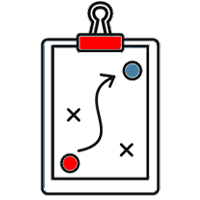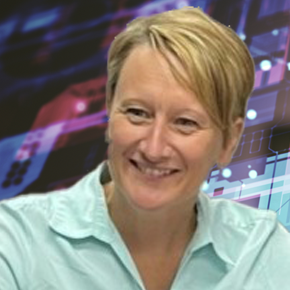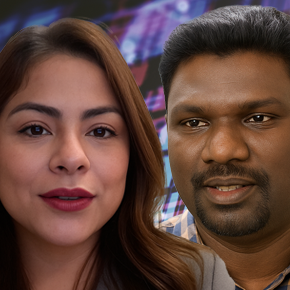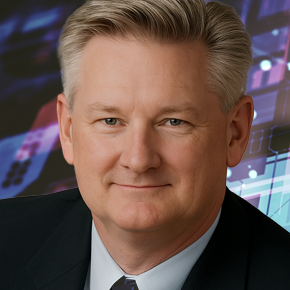March 3, 2023
Cost Projection as Competitive Advantage
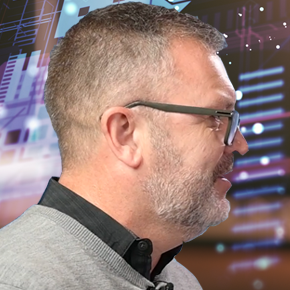
Transcript
Cost Projection is a Competitive Advantage
Leah Archibald: Accurate cost projection is a competitive advantage. Imagine what would happen if your costing solution wasn’t adjacent to your business processes, but a core part of what made your company competitive. This has been true for Flex, a manufacturing partner providing components for appliances, electrical systems, and electronics.
In a case study at aPriori’s recent Manufacturing Insights conference, we learned that Flex is leveraging its digital factories to reduce its time to quote – from days to seconds – and become the supplier of choice for its customers. At the conference, I caught up with Mike Perrott, Senior Director for Commercial Business Systems at Flex. I wanted to hear for myself what it’s like to implement a single version of the truth across 70 sites and thousands of employees. As you listen to our conversation, I think you’ll be encouraged to learn that the effort it takes is more than worth it when it comes to process efficiencies, business won, and the increased market share you can achieve once you make digital insights your competitive advantage. Here’s my conversation with Mike Perrott.
Leah Archibald: I’m here with Mike Perrott from Flex. Tell us a little bit about what you do there at Flex.
Mike Perrott: I run the global core team for Flex, which is a $27 billion company. We’ve got 70 different sites around the world and all the way through Asia, North America, South America, and Eastern and Western Europe and in Canada. So we’re all over.
Leah Archibald: And you’ve been working with aPriori for a little while.
Mike Perrott: Since 2017. We engaged with aPriori in the middle of 2017 for metals. We do a lot of metal fabrication at Flex, as well as PCBAs and everything else. But we started with metal fabrication because we really had a weak pricing model at the time, and we struggled with our customers in metals. We had a huge factory, but we had very little business. So we just struggled and we needed something better. We needed a solution that would actually impress us and the customer and understand our cost. So, we engaged with aPriori and we brought up six sites around the World: in China, in Malaysia, in Mexico, and in Europe. And now we’re in the process of doing the same thing for plastics. We’ve got 13 sites targeted for plastics. We’ve got six sites up and running, and we’ve got another number to start working on over the next few weeks.
How to Leverage aPriori for Cost Projection
Leah Archibald: Walk me through what that looks like. Imagine you’re talking to someone who’s never done this before. How do you leverage aPriori as part of your cost projection process?
Mike Perrott: It’s good question. First of all, let me tell you a little bit about what we do. I’ve got a large team that records all new business for print circuit boards, metals and plastics. So when business comes in from our sales team globally, they come through my team to project costs and transform this opportunity into our pricing model.
For cost projection we have two parts to it: one part is raw materials, and one part is transformation. Raw materials is done by global materials modeling and supply chain. They will take the bill of materials and break it down into what we need to make versus what we need to buy. What we need to buy, we send to our supply chain team. And then it comes to the make part – that’s where we come in and figure out how we’re going to manufacture this from a labor point of view, from overheads to depreciation facilities. aPriori allows us to model complex products like metal fabrication products and plastic parts from precision plastics up to general plastics. We will take the customer 3D model and import it right into aPriori, and allow the technology to give us a very precise bill of material structures immediately. Before we had to do this manually – going to 2D models and pulling the information out of them.
Leah Archibald: I can imagine the time savings going from 2D models to automatically costing 3D models.
Mike Perrott: It’s unbelievable. It’s 30 seconds, versus three days. That gets huge savings for us. And it’s precise. So we can send a make-and-buy analysis immediately and it goes right to the supply chain. And meanwhile, the engineering team is doing the transformation modeling in aPriori. The cost of BOM is in aPriori. And then ultimately that resulting cost information is sent to our pricing model, which is linked to aPriori. So then we can build our pricing models with combined products together. We can look at the full BOM structure – we can look at the cost of parts of everything we make and buy together. It allows us real accurate views of everything, because it’s 3D based – it’s geometry based. It’s not based on someone’s subjective view of things, it’s actual geometry. And because we’re using aPriori, we’ve got a complete digital history of every quote we’ve ever done since 2018. Every single product, every single path. Before, it was all manually done, stored in different databases, and stored in Excel files. It was just a mess. Now we’ve got a digital record of everything we’ve ever done since day one, and we can see the trends of where it’s going. It’s a powerful tool to have.
Leah Archibald: You’re really solving for the two areas that manufacturers usually fail on. One is getting decisions in and out of different systems – that’s where the mistakes happen. And then the other is having everybody be able to access a single version of the truth so that the truth isn’t going out the door when someone leaves and goes to another company.
Mike Perrott: That’s right. That’s a big thing. We had Excel files in the past and that’s exactly what happened – people left the company and took a copy of the tool with them. And then they go to a competitor. We didn’t know what was happening in the sharing of that information. Now it’s all protected in the cloud.
Using aPriori for Capital Expenditure
Mike Perrott: We’re using aPriori now for capital expenditure. We pull all the capital costs out of the model and help us with defining how we are going to build a new factory. We’re using the information that’s in aPriori, which is really cool. Before it was all manually calculated. Now we’re taking actual cycle times, actual machines, and actual volumes and projecting what we need next. And the tool is becoming part of how we work. So, it’s really powerful. There’s lots of opportunity.
Leah Archibald: Your digital insight actually becomes an asset.
Mike Perrott: Yes. Yes. It does.
Leah Archibald: This is an exciting place to be. Thank you so much for sharing what’s going on at Flex right now.
Mike Perrott: You’re very welcome. Thank you.
